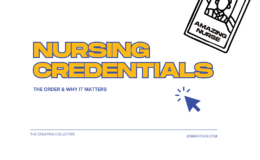This is part ten of the Nursing Research Challenge.
The Article: Tanga, H. (2011). Nurse drug diversion and nursing leaders’ responsibilities: Legal, regulatory, ethical, humanistic, and practical considerations. JONA’s Healthcare Law, Ethics, and Regulation, 13(1): 13-16.
Big Idea: As with many issues, substance abuse rates within the nursing profession mirror the general population. Unfortunately, some nurses do divert drugs, compromising patient care and leaving the healthcare institution liable. Nurse leaders have a responsibility to ensure adequate safeguards are in place to prevent drug diversion by nurses. Drug diversion creates numerous issues for nurse leaders to keep in mind while managing the situation.
Survey Says: This article utilizes a fictitious case study of drug diversion to explain the legal, regulatory, ethical, humanistic, and practical concerns that arise in such situations as well as appropriate measures nurse leaders should keep in mind during like events.
Quotable: “‘Negligent supervision’ could be charged against the NE [nurse executive] for failing to report an impaired nurse who has admitted to narcotic diversion. The NE has an obligation to ensure nurses provide safe and prudent patient care, and failure to report or resolve the situation would be negligent and potentially subject the nurse and patients to further harm” (p. 13).
“The NE must also be aware that drug diversion is a symptom of the disease of addiction and that addiction is a treatable disease” (p. 14).
“Nurse diversion programs are critical for the profession, and healthcare organizations must ensure nurses are treated, and a safe return to the workplace is facilitated” (p. 14).
So What?: I am very familiar with Texas’ peer-assistance program for nurses, yet there were several issues for nurse leaders to consider while managing drug diversion within the healthcare institution and nursing unit that I had never thought. With its fictional case study and concise descriptions, this article is easy to understand and powerfully informative. It is a must read for any nurse leader, but I highly recommend it for new nurse leaders and managers. It solidifies the complexity among drug diversion in the nursing profession and the great responsibilities nurse leaders have to prevent and correct such situations.





